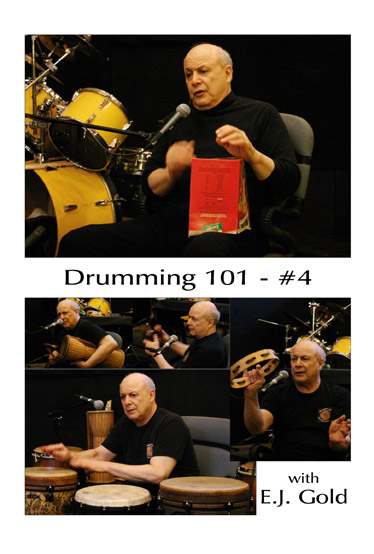


Drumming 101 #4
Class October 24, 2010 Class with E.J. Gold
Price: $24.95
1 DVD Set | Approx. 1 hour
Find a household object you can use for a drum. E.J. showed a large empty dog biscuit box with the flaps trimmed off as a prime example of the diversity of found objects. He hit different sides of the box and produced different tones. Given that the object is made of all the same material with the same thickness, the larger the area hit, the lower the tone.
Explore your object / instrument. Hold it various ways and hold it free from things to get different sounds. E.J. demonstrated different effects from hitting the box differently, including putting pressure on the back area while hitting the front. It.s important to understand the potentiality of the instrument you are playing.
You want to differentiate the tones, timbre and pitches you are playing. Later you.ll work with decays, attacks, staccato, legato . chopping up and smoothing out /stretching time bits . and pianissimo and crescendo . playing softly and smoothly coming to a peak.
E.J. instructed the class to beat a rhythm together. He set the base and each student matched it or added to it with their instrument. Keep the beat. Play with total confidence.
Find something around your house to play as a drum. Experiment with things as if you were an exploring three year old. E.J. suggested things from spoons to velcro and selected numerous items in the studio and experimented with them as if they were percussion instruments. Look for different tonalities. You can change tonality by how you hit something. For the homework, discover the many variously-toned sounds your .drum. can make, and combine those sounds in patterns.